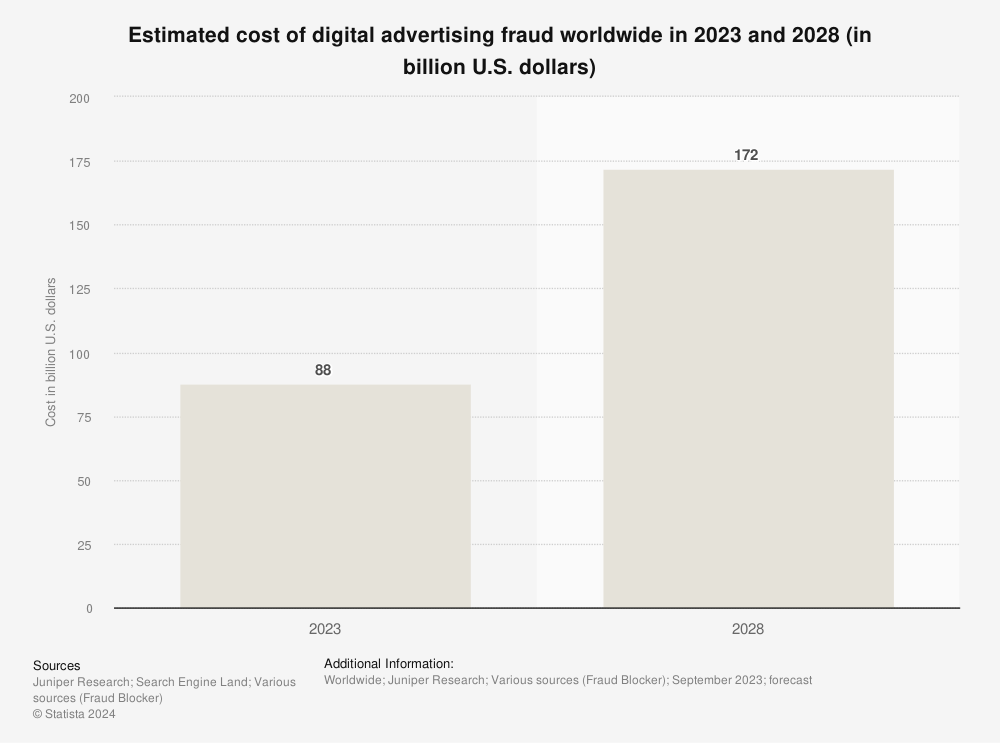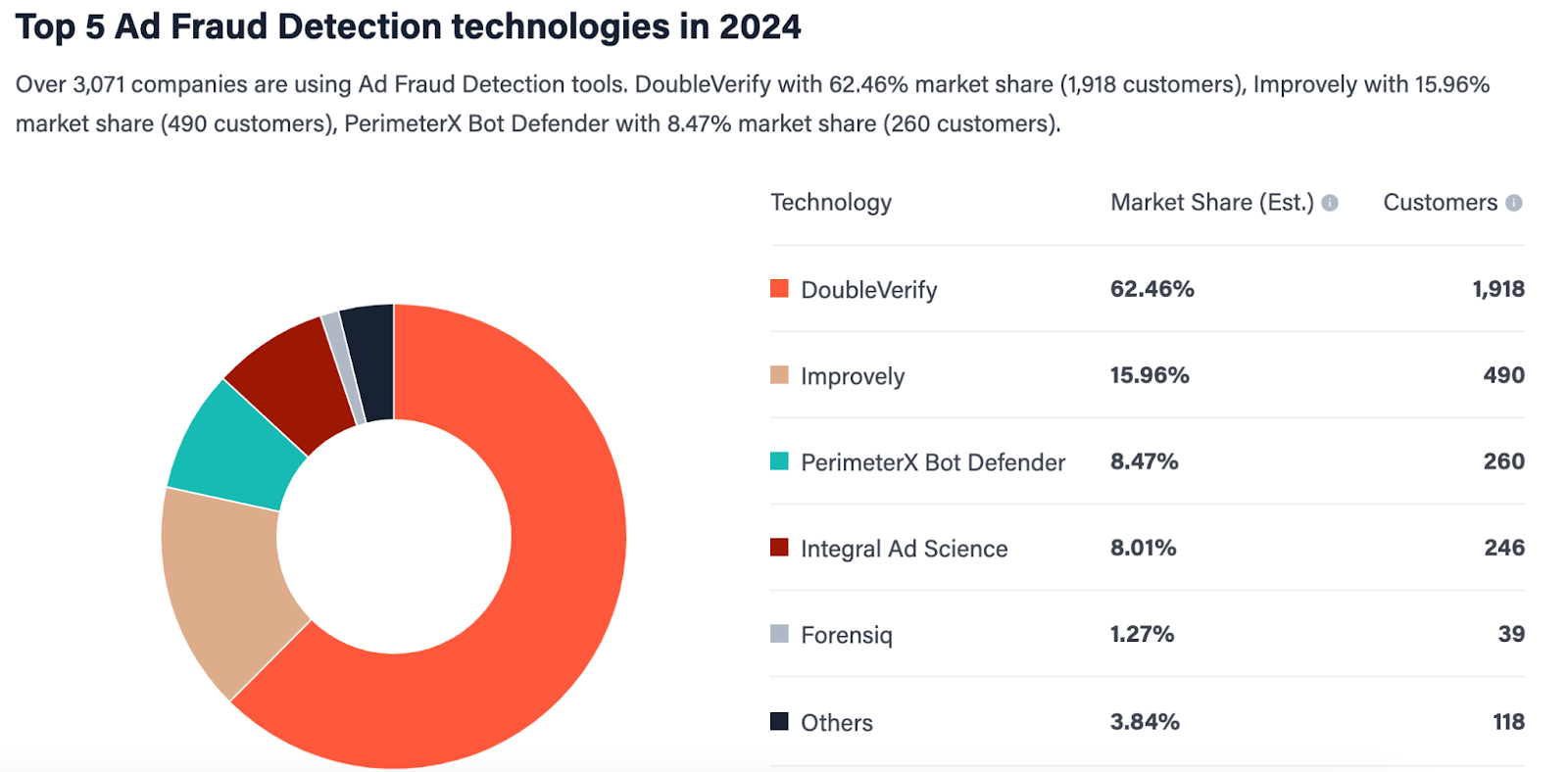Picture this: you’re running an online advertising campaign and your team is glad to see it’s going smoothly, even exceeding performance expectations. But not all is as it seems. You realize the ad dollars you thought you were funneling into reaching your customers are actually going to waste on fraud.
Ad fraud happens when the delivery of ads to real users or the intended audience is disrupted, often by bots. This has been an increasing problem for marketers in recent years, and it’s particularly rampant for programmatic advertising: according to a study by Juniper Research, 22% of all online ad spend was lost due to ad fraud in 2023.
Beyond the financial impact, this can also lead to false engagement numbers that can wreak havoc on both your marketing budget and any actionable insights from your campaign. So how can you detect when ad fraud is happening and prevent your marketing from falling prey to fraudsters?
Get a clue: how to spot ad fraud
Since programmatic advertising is a complex ecosystem and often lacks transparency, it’s easy for ad fraud to go unnoticed. That’s a major issue for advertisers–because fraud is so frequently left unchecked, Juniper Research estimates that the cost of digital ad fraud worldwide will be a whopping $172 billion by 2028.
To protect your campaigns, your team needs to know what signs to look out for. That can be harder than it sounds since ad fraud isn’t one-size-fits-all; it comes in many different forms that marketers need to be aware of.
Examples of ad fraud include click farms, click bots, competitor click abuse, redirect attacks, video viewing fraud, pixel stuffing, and incentivized clicks. Luckily, when it comes to uncovering ad fraud, you don’t have to be Sherlock Holmes to see the signs.

Source: Juniper Research
First, you should keep an eye on your traffic. If you’re seeing irrelevant traffic sources originating from obscure websites or if there’s a sudden unexplained spike in website traffic that’s not accompanied by increased engagement or a known boost in media coverage like a big news story or a sales event, you’ve probably got bot activity.
Your click-through rates (CTR) are also a good place to watch for fraud. Abnormally high CTRs might seem exciting at first, but if your CTR has risen suspiciously high, you’ve likely fallen victim to fake clicks automated by scripts or a click farm.
Other signs you should look into include low conversion rates, minimal time spent on landing pages despite high traffic volumes, or inconsistencies in user behavior like unrealistic session durations or repetitive actions.
It’s also important to recognize any non-human traffic patterns, like uniform session lengths or identical mouse movements, as these also suggest bot activity.
There are lots of ways bots can make themselves known in your traffic patterns, so you should always keep close tabs on your data and flag any unusual changes to investigate with your team. If you let unexplained developments in your traffic slide today, you might be looking at a bigger problem in the future.
Crack the case: solving the ad fraud problem
Now that you know how to detect ad fraud, it’s time to resolve the issue and prevent it from happening again. Few campaigns will be 100% fraud-free, especially as bad actors continue to evolve their tactics to outsmart advertisers, but there are tools that can help.

Source: Statista
When protecting your campaign from fraud, both your pre- and post-bid settings will play a big role.
You can stop problems before they begin by enabling pre-bid fraud detection, which prevents bidding on ad inventory with fraudulent or suspicious traffic. This goes a long way towards safeguarding your ads, but so much is changing on the internet second by second that pre-bid detection can’t always keep up, so it may not filter everything.
To further shield your campaigns, you can use post-bid tech through a brand safety partner like DoubleVerify or Integral Ad Science:
- Integral Ad Science uses advanced machine learning and AI within the brand safety solution to accurately classify risk across the billions of daily impressions globally. It measures more volume globally than other ad fraud solutions, which makes the technology very accurate.
- DoubleVerify offers more categories of protection and greater customization for brand suitability. It verifies everywhere ads are placed and ensures seamless and consistent measurement across channels, platforms, formats, and geographies.
No matter which partner you choose, for post-bidding technology to work you’ll need to put additional tags in place for the tool to monitor or block. If a page is deemed safe, your ad is served. If a page is suspicious, your tech solution will prevent your ad from appearing in that slot to avoid any potential issues. While these post-bid blocking options are great, remember that, like pre-bids, they’re not a catch-all for every type of ad fraud.

Source: 6Sense
In some instances, post-bid blocking won’t be feasible, so you’ll still need to protect your brand through other methods. Keep an eye on important indicators and make sure you have monitoring technology in place to analyze viewability, fraud, and brand safety thresholds.
Ad fraud isn’t going anywhere; it’ll only become more sophisticated as technology continues to develop. To make sure you’re really reaching your target customers, not bots, you’ll need to stay vigilant to make sure fraudulent activity isn’t draining your budget or throwing off your strategy.
To keep your brand safe in the future, put a system in place with your team to report and investigate any dubious changes in traffic and make sure you’re up-to-date with the latest developments in ad tech to choose the best cutting-edge safety tools and stay ahead of new ad fraud schemes.








Responses